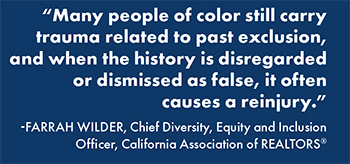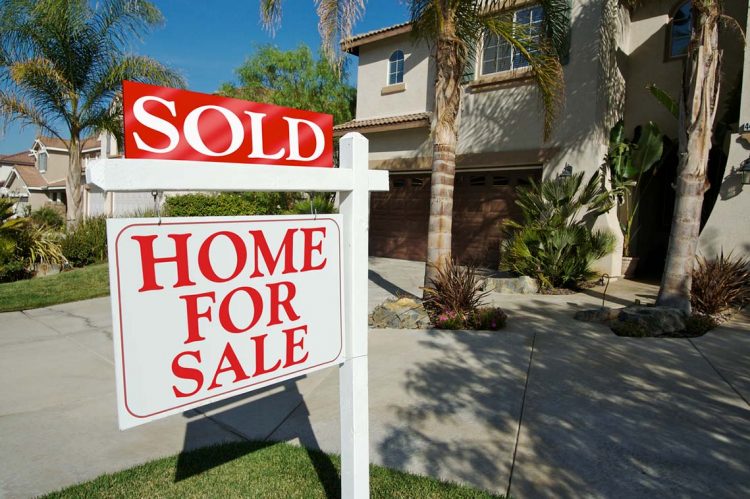June is National Homeownership Month—the perfect time to put the spotlight on helping all of your clients achieve the American Dream; to reexamine your offices’ practices and protocols around diversity, equity and inclusion; and to focus on furthering the fight to increase access to homeownership for people of every background.
Barriers to homeownership
Current market conditions are challenging for everyone in search of a home with increasing interest rates, staggering student loan debt, escalating rents and what the National Association of REALTORS®’ (NAR) research team recently described as “double trouble”—simultaneous record-high home prices and record-low inventory. The Double Trouble of the Housing Market report, released by NAR in partnership with realtor.com®, revealed that since 2019, home prices have risen nearly 30%, eroding affordability and making a typical home nearly $80,000 more expensive than pre-pandemic. Meanwhile, inventory of homes for sale dropped significantly in the same period, reaching record lows in 2021.
These and other factors are putting homeownership out of the grasp of more and more Americans. And while affording a home is challenging for many segments of the market, such as first-time buyers and millennials, the issues are compounded for people of color and minorities with additional obstacles, including deep-rooted wealth inequality and historical discrimination.
The homeownership gap
NAR’s 2022 Snapshot of Race and Home Buying in America shows glaring differences in homeownership rates between ethnic and racial groups, with a nearly 30-point discrepancy between White and Black households. For the period between 2010 and 2020, homeownership rates rose for white Americans from 70.6% to 72.1%, for Asian Americans from 58.5% to 61.7% and for Hispanic Americans from 47.3% to 51.1%. Black Americans were the only group to experience a decline, from 44.2% to 43.4%, resulting in an increasing homeownership gap between White and Black households.
Our exclusionary history
Sadly, once-legal discriminatory practices, like redlining and racially restrictive covenants, are still affecting us today and very much impacting how neighborhoods and schools are perceived by the public and real estate agents. Farrah Wilder, chief diversity, equity and inclusion officer of the California Association of REALTORS®, believes that REALTORS® should have historical perspective and knowledge of the bias and exclusionary practices that helped create the homeownership gap.
“Understanding why there is inequality may help REALTORS® more sensitively work with individuals from historically underserved communities,” says Wilder. “Many people of color still carry trauma related to past exclusion, and when the history is disregarded or dismissed as false, it often causes a reinjury and may exaggerate cross-cultural divides and distrust.
“Not only do people of color, on average, have less generational wealth because they were historically denied equal access to homeownership opportunities, but they still experience a great deal of bias and, therefore, they may have quite a bit of justifiable apprehension. Showing a willingness to learn and listen while taking steps to support homeownership in underserved communities can build very important bridges,” adds Wilder.

Best practices for working with diverse clients
To help agents embrace diversity and provide sensitive service for all clients, Wilder offers some best practices:
- Use consistent buyer intake systems.
- Show buyers everything that meets their criteria.
- Avoid recommending specific areas or schools.
- Refrain from saying: “You don’t have the funds/credit to buy.”
- Review fair housing rules and anti-discrimination practices with clients.
- Discuss buyer letters with sellers and the issue of wanting to know details about buyers.
- Review your marketing for exclusionary language and replace it with inclusionary language.
During June and throughout the year, NAR encourages you and your agents to champion homeownership for all, to help remove barriers and to take part in supporting meaningful change around historical disparities. Visit https://www.nar.realtor/june-is-national-homeownership-month to learn more and join the conversation on social media.











